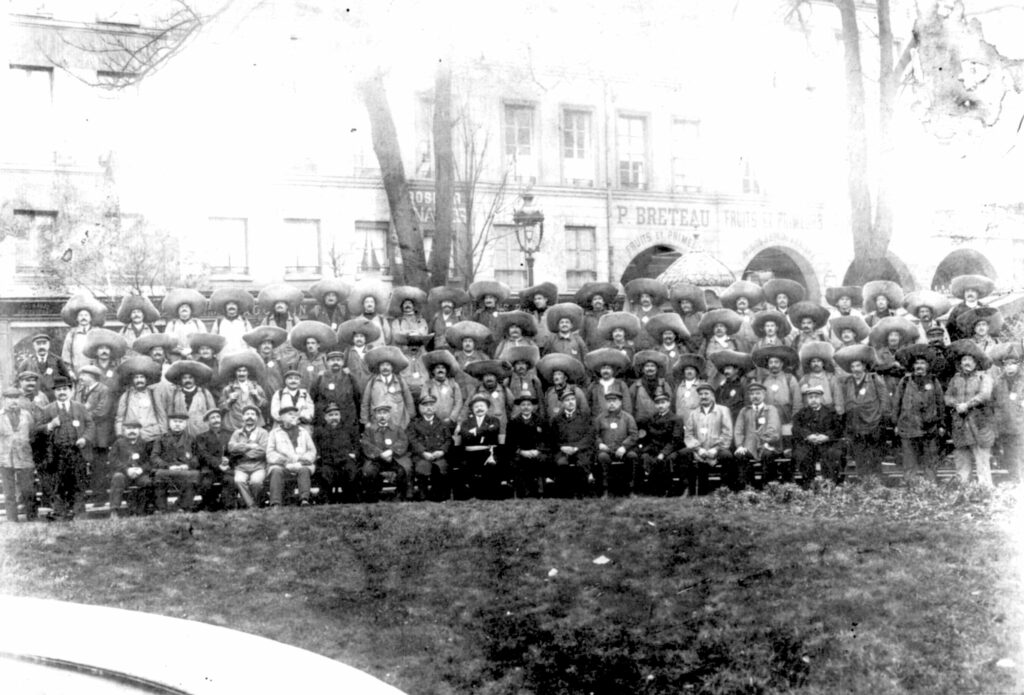Largest market in France, and in Europe, in the heart of the city, the Halles de Paris tell a part of the history of the capital, which ended with the move to Rungis in 1969. A story told by the multitude of small trades, sometimes unusual, often forgotten, which made up the daily life of the market and brought life to its famous Baltard halls. From scenters to harlequins, an original dive into the ancient belly of Paris.
- The forts of Les Halles, or muscular
Recruited by the Prefecture, they handled food handling by unloading and transporting the goods. A corporation that knew Les Halles and its various stakeholders perfectly, very useful for the police services, with whom the muscle of Les Halles collaborated regularly.
They were identifiable by a large medal bearing the arms of the city of Paris, as well as their large “coltin”, a yellow leather reinforced hat with wide brims, which helped them in their task. In fact, it was necessary to be able to carry on average 200 kilos over a distance of 60 meters… Transport that they “struggled” with!
- The ladies of the Halles
Corporation of merchants with typical Halles language. Among them, the President – or Queen – of Les Halles, was responsible for welcoming foreign heads of state or sovereigns during official visits. The Paris market was once a must for the great people of this world! And women had their representative there.
The passage of the Queen of Hungary, located at 17, rue Montorgueil, recalls one of its ladies, guillotined during the French Revolution for having been a little too familiar with Marie-Antoinette.
- The scenters
They carried out health checks on goods using their… sense of smell. Quite simply. While the “candling counters” counted and checked 1,250 eggs per hour, and the “undertakers” plunged the “failing” oysters into salt water to bring them back to life before putting them back to life. offer for sale.
- The fruit trees
They checked the butter by taking a piece with a probe. Once tasted, it was spat out on a bed of straw. At the end of the day, everything was collected, melted and sold to caterers for their fried foods. Recycling before its time!
A crowd of small tradesmen also jostled around the halls, trying to take advantage of the frequentation of the place. Harlequin merchants prepared meals with leftovers collected from bourgeois tables and restaurants. This most often consisted of bones soaked in broth. They were also called the “jewelers”.

